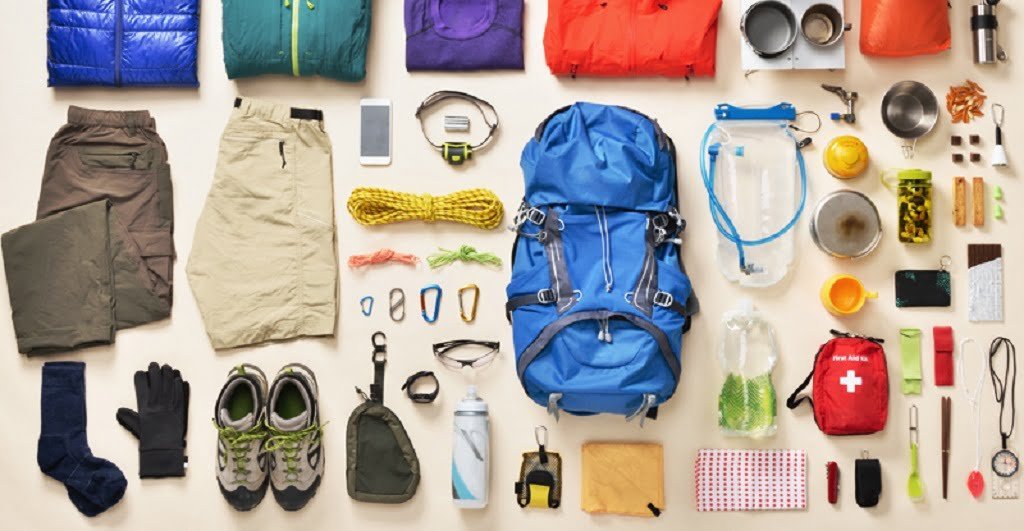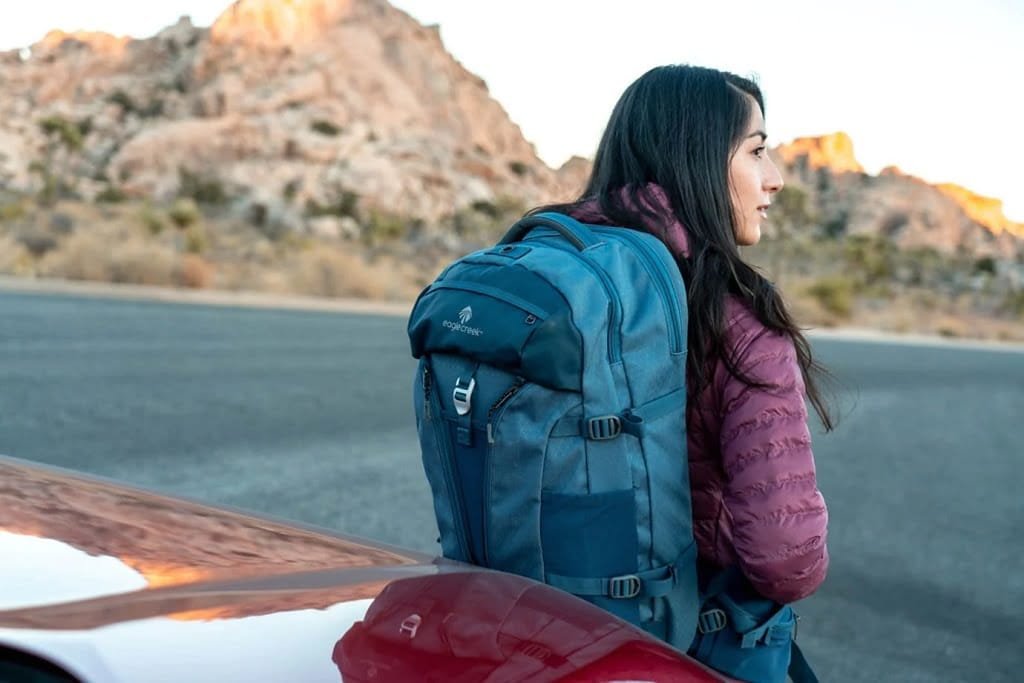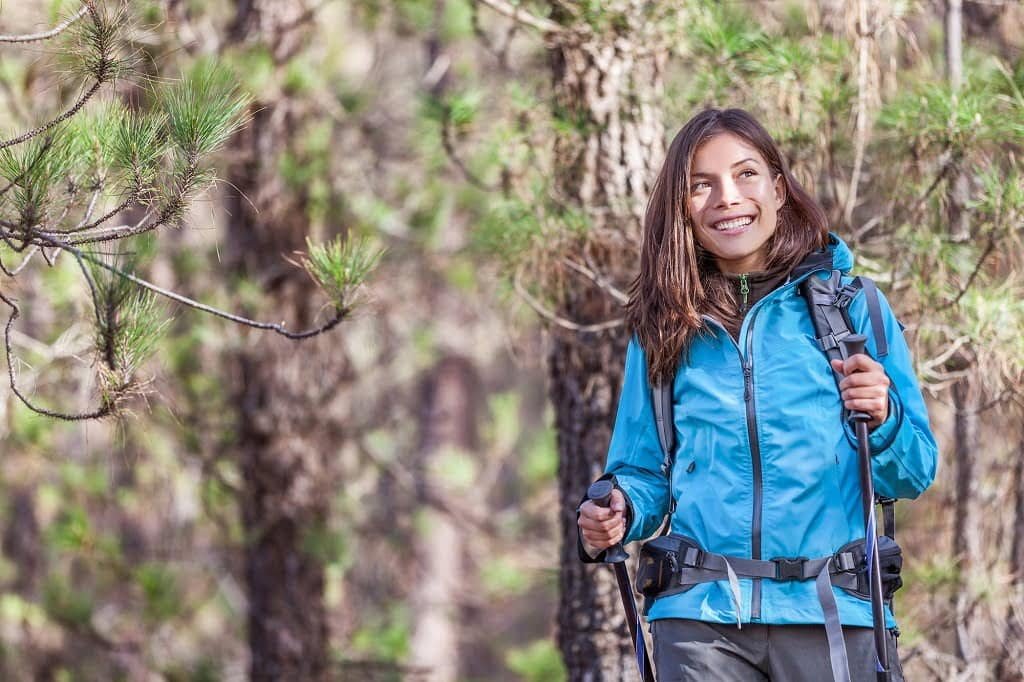Hiking is a great way to get in touch with nature, push ourselves physically, and see beautiful places. However, a successful hiking trip depends significantly on how well you pack your backpack. The art of packing efficiently ensures you have all the necessary gear while keeping the load manageable.
One of the first things you should learn as a new hiker is how to pack a camping backpack. You’ll soon realize that getting ready to leave is probably one of the most important parts of your future trip since forgetting an important item can quickly ruin the whole thing.
When I initially learned how to pack a backpack for backpacking, I only packed a water bottle to replenish at streams and a sleeping bag. These days, I prefer to bring a water bladder because I find it easier to take sips from these types of water holders while hiking. I have also made room in my pack for other items that I now realize are essential for hiking, especially if it is a multi-day trip.
Why Does My Backpack Have So Many Straps?
The straps on your backpack help compress goods inwards, keeping a tight center of gravity and boosting your ability to trek without difficulty. Before setting out on the trail, make sure they’re completely buckled and tightened.
Many backpacks also contain semi-secret zippers that make it much easier to navigate your packed backpack; examples include side zippers and bottom zippers for reaching concealed goods.
Some packs include a sleeping bag compartment at the bottom with a trap door to keep dirty clothes, food, and damp gear out of your bag. If you’re short on space, unzip that flap.
Read More: Are Hiking Pants Necessary?
1. Preparing for Your Hike
Researching the Trail and Terrain
Before you start packing, thoroughly research the hiking trail and terrain you’ll be navigating. Familiarize yourself with the length, elevation gain, weather conditions, and any potential hazards. This information will help you gauge the appropriate gear and supplies needed for the journey.
Determining the Appropriate Backpack Size
Selecting the right backpack size is crucial for a comfortable hike. Assess the capacity needed to accommodate all your gear and supplies. A backpack with a capacity of 40 to 60 liters is usually sufficient for day hikes, while longer trips might require larger packs.
Choosing the Right Backpack
Invest in a high-quality, ergonomic backpack that fits your body well. Ensure the backpack has a sturdy hip belt, adjustable shoulder straps, and ventilation features. Because it minimizes sweat and discomfort during long hikes.
2. Selecting Gear and Equipment

The Ten Essentials are the must-have items for any hiking trip. They include navigation tools like a map, compass, or GPS, sun protection gear such as sunglasses, sunscreen, and a hat, hiking boots, insulation layers for varying weather conditions, illumination with a headlamp or flashlight, first-aid supplies, fire tools like lighters and matches, a repair kit, extra food and water, and a shelter, such as a tent or tarp, and a sleeping bag.
3. Organizing Your Backpack

Divide Your Gear into Essential Categories
Organize your gear into categories like shelter, clothing, food, and cooking equipment. Use stuff sacks or packing cubes to group similar items together, making it easier to find them when needed.
Using Stuff Sacks and Packing Cubes for Organization
Stuff sacks and packing cubes not only keep your gear organized but also protect them from moisture and potential damage. Invest in compression sacks to save space while keeping your clothes and sleeping bag dry.
Keeping Frequently Used Items Easily Accessible
Place frequently used items like snacks, a map, a multitool, or a rain jacket in the top or side pockets of your backpack for quick and easy access without needing to unpack the entire bag.
4. Tips for Proper Packing
Weight Distribution for Better Balance
Distribute the weight evenly to maintain balance and stability. Place heavier items, such as water bottles and cooking gear, near your back and higher up in the backpack.
Placing Heavier Items Near Your Back and Higher Up
By positioning heavier items closer to your back, you prevent excessive strain on your shoulders and maintain a better center of gravity. Additionally, place lighter items towards the bottom and away from your back.
Keeping the Center of Gravity Low
A lower center of gravity enhances your balance while hiking. Avoid placing too many heavy items on top and distribute weight across the height of the backpack.
Also Read: The Good Winter Gloves for Hiking to Keep Your Hands Warm
5. Clothing Considerations

Layering System for Different Weather Conditions
Plan your clothing based on a layering system. Start with a moisture-wicking base layer to keep sweat away from your skin, followed by insulation layers for warmth, and a waterproof and windproof shell to protect against the elements.
Packing Versatile and Lightweight Clothing
Choose clothing items that serve multiple purposes and can be mixed and matched. Opt for lightweight and quick-drying fabrics that are easy to wash and dry during your trip.
Choosing Moisture-Wicking and Quick-Drying Fabrics
Moisture-wicking fabrics draw sweat away from your skin, preventing discomfort and chafing. Quick-drying fabrics help you stay dry even if you encounter unexpected rain or stream crossings.
6. Packing Food and Nutrition
Meal Planning and Portion Control
Plan your meals to ensure you have enough energy throughout the hike. Consider portion sizes and calorie intake to match the physical demands of the journey.
Packing Lightweight, Non-Perishable, and Energy-Dense Foods
Choose foods that are lightweight, non-perishable, and rich in energy. High-calorie snacks like nuts, energy bars, and dried fruits provide sustenance without adding excessive weight to your pack.
Consideration for Dietary Restrictions and Allergies
If you have dietary restrictions or allergies, plan your meals accordingly. Consider alternative options that meet your dietary needs and won’t spoil easily.
7. Hydration Strategies

Calculating Your Water Needs for the Hike
Estimate your water consumption based on the trail’s difficulty, weather conditions, and your own hydration requirements. Carry enough water to last between reliable water sources.
Utilizing Hydration Bladders, Bottles, or a Combination
Choose a hydration system that works best for you. Hydration bladders with a hose offers easy access to water while hiking.
Knowing Water Sources on the Trail
Research the locations of water sources along the trail to plan your refill points and avoid carrying excess water.
Related Post: What Muscles Do Hiking Work?
8. Hiking Safety and Emergency Preparedness
Educating Yourself on Potential Hazards and Risks
Understand the risks associated with the trail, such as wildlife encounters, unpredictable weather, and difficult terrain. Prepare for these challenges to ensure your safety.
Carrying Emergency Communication Devices
Carry a satellite phone or a radio to stay connected with the outside world in case of emergencies, especially when hiking in remote areas with limited cell phone coverage.
Preparing for Unexpected Situations
Pack additional items like a fire starter, emergency shelter, and signaling devices for unexpected situations where you might need to spend an unplanned night outdoors.
9. Adjusting Your Pack for Comfort
Properly Fitting and Adjusting the Backpack
Before hiking the trail, ensure your backpack is properly adjusted to your body’s shape and size. Adjust the shoulder straps, hip belt, and sternum strap for a comfortable fit.
Fine-Tuning the Shoulder Straps, Hip Belt, and Sternum Strap
Properly adjusted shoulder straps prevent chafing and distribute the load evenly across your upper body. The hip belt transfers the weight to your hips, reducing strain on your shoulders.
Avoiding Common Mistakes That Lead to Discomfort
Avoid overpacking and uneven weight distribution, which can lead to discomfort and fatigue during your hike.
10. Leave No Trace Principles
The Importance of Preserving Nature and Minimizing Impact
Adhere to the Leave No Trace principles, which promote responsible hiking and minimize the impact on the environment.
Packing Out Trash and Waste
Pack out all your trash and waste, including food scraps, to keep the trail clean and pristine.
Respecting Wildlife and Natural Habitats
Observe wildlife from a distance and avoid disturbing their habitats to maintain the natural balance of the ecosystem.
Read More: Hiking With Plantar Fasciitis
How to Avoid Overpacking?
Make a detailed packing list: Plan ahead and create a comprehensive list of essential items you’ll need for the hike. Stick to the list and avoid packing items on impulse.
Opt for lightweight gear: Invest in lightweight and compact equipment, such as a lightweight tent, sleeping bag, and cooking gear. Choose gear designed for backpacking to reduce overall weight.
Pack multi-purpose items: Choose gear and clothing that serve multiple functions. For example, a trekking pole that can double as a tent pole or a jacket that can work as a pillow.
Limit clothing to essentials: Bring only the necessary clothing items for specific weather conditions. Choose moisture-wicking and quick-drying fabrics that you can layer if needed.
Minimize food and water weight: Carry just enough food and water to sustain you during the hike. Plan your meals and snacks carefully to avoid carrying excess weight. Consider using lightweight, collapsible water bottles or hydration bladders.
Conclusion
Packing a hiking backpack is an essential skill for any outdoor enthusiast. By following these guidelines and considering your specific needs, you can ensure a safe, comfortable, and enjoyable hiking experience. Be well-prepared, embrace the beauty of nature, and cherish the memories you create on your hiking adventures. Happy trails!
















[…] Also Read: How to Pack a Hiking Backpack? […]
Comments are closed.